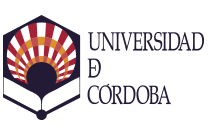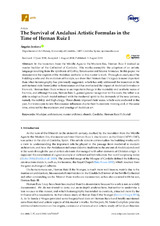The Survival of Andalusi Artistic Formulas in the Time of Hernan Ruiz I
Autor
Jordano Barbudo, M. Ángeles
Editor
MDPIFecha
2018Materia
MudejarArchitecture
Master architect
Church
Córdoba (España)
Hernan Ruiz I’s burial
METS:
Mostrar el registro METSPREMIS:
Mostrar el registro PREMISMetadatos
Mostrar el registro completo del ítemResumen
In the transition from the Middle Ages to the Modern Era, Hernan Ruiz I worked as
master builder of the Cathedral of Cordoba. His works exemplify the adoption of an artistic
language resulting from the symbiosis of Gothic, Renaissance and Islamic formulas. In this paper, we
demonstrate the imprint of the Andalusi aesthetic in this master’s work. Through an analysis of his
building works and the evolution of his style, we show that Hernan Ruiz I’s legacy is more important
than what historiography has previously suggested, which has only addressed the transition in his
architectural style from Gothic to Renaissance and has overlooked the impact of Andalusi formulas in
his work. Hernan Ruiz I bore witness to an important change in the mentality and aesthetic tastes of
his time, and although his son, Hernan Ruiz II, gained greater recognition for his work, his father was
able to adapt a church model imbued with the medieval spirit to the demands of the new patrons,
namely the nobility and high clergy. These clients imposed their tastes, which were anchored in the
past, but were open to new Renaissance influences due to their humanistic training and, at the same
time, attracted by the exoticism and prestige of Andalusi art.

